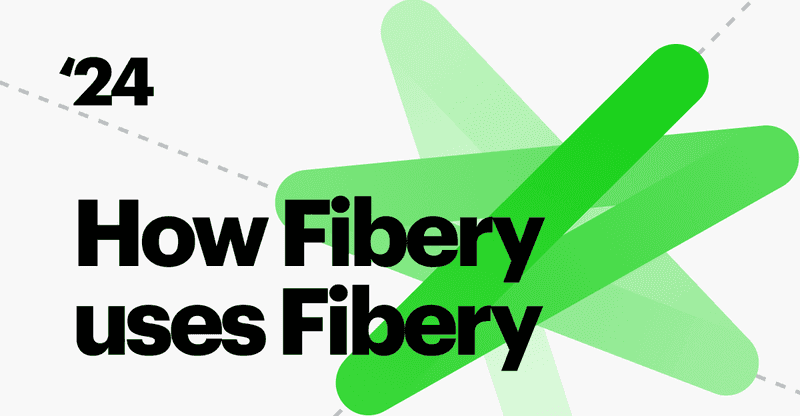Fibery vs. Airtable


Where Fibery
works better?
Processes and work management.
Complex processes like product management,
feedback management, user research, software development.
Where Airtable
works better?
Database-specific cases (better Excel).
Collect and organize information in various domains (catalogues, lists, CRM).
“We used Airtable for 1.5 years to manage our Software Development process but switched to Fibery, as we can use it to manage all our processes, including Soft Dev, Product Management, Hiring, OKR, Customer support, and more“
Fibery
strengths
Whiteboard View to create diagrams and mind-maps
💪 Bases are easy to connect via relations, no sync is required.
More advanced Board View: horizontal lanes, change cards layout
Hierarchical List View to visualize deep hierarchies (Product → Features → Tasks)
Fibery is less expensive and almost all features are available in $10/user/month edition.
Airtable
weaknesses
No documents to capture unstructured and text-heavy information (Feature specs, Ideas, blog posts, etc).
🦐 Base to base connections and relationships are weak. Syncing two different databases isn't very reliable or easy to do.
Basic board view - can’t change cards layout, cant have horizontal lanes
Very basic charting feature.
Poor information organization, navigation between bases is slow.
Fibery vs. Notion


Where Fibery
works better?
Processes and work management for medium and large teams. Complex processes like product management, feedback management, user research, software development tracking.
Where Notion
works better?
Personal life organizer. Small/medium company wiki. Work management for teams with simple processes.
“EduDo switched to Fibery from Notion, as we needed a customizable tool that can adapt to a dynamic team and grow with it. Fibery is the most flexible tool that I've ever seen, and it has great potential to scale.“
Notion
weaknesses
Databases are harder to connect and it is not possible to create deep hierarchies
There are no charts and reports to visualize data
It is not possible to group information by relations in Boards and other views
🦐 No automation rules and action buttons
Formulas are not very powerful for hierarchical data structures
No Whiteboard View to draw diagrams
Bi-directional links are rudimentary
Fibery vs. Coda


Where Fibery
works better?
Processes and work management for medium and large teams. Complex processes like product management, feedback management, user research, software development tracking.
Where Coda
works better?
Mobile apps. Complex work processes that don't demand heavy text scenarios (roadmapping, product management, etc). Overall, Fibery and Coda areas of applicability are quite close.
“I had tried Coda, Notion, and a bunch of other similar tools, but the problem always was that it felt like a system built by others. With Fibery, it feels like the opposite. I build the system, and it just provides an interface to work with my data.“
Fibery
strengths
Board View is more advanced with horizontal lanes and better customizations
Timeline View to create roadmaps is interactive
Hierarchical List view to visualize deep hierarchies (Product → Features → Tasks)
Powerful rich edit field to create text inside entities (specifications, ideation, blog posts).
Whiteboard View to create diagrams and mind-maps and include entities from Fibery into it
Better information organization and navigation for the whole company.
Coda
weaknesses
🦐 For any complex process Coda quickly becomes extremely hard to maintain and it has many workarounds to make it work
No good way to connect Docs and form a connected workspace
Charts are very basic and limited
Timeline View is very restrictive, Board view is weak and not fully customizable
No Whiteboard View to create diagrams
Fibery vs. ClickUp


Where Fibery
works better?
Processes and work management for medium and large teams. Complex processes like product management, feedback management, user research, software development tracking. Knowledge management and text-heavy processes.
Where ClickUp
works better?
Projects and tasks management for small and medium teams.
“Fibery is robust, but super simple to use and very customizable. Perfect solution for product teams and more. Wish I knew about it sooner — it kicks Jira's, ClickUp's, and all other tools ass.“
Fibery
strengths
Hierarchical List view to visualize deep hierarchies (Product → Features → Tasks)
Bi-directional links are better and more visual
Custom Action Buttons to program your own behavior
Powerful integrations that fetch all data from external systems
Flexible information organization in sidebar to simplify the whole company cases.
ClickUp
weaknesses
Limited information organization capabilities. Hard to connect many processes.
Hierarchies are impossible to create
🦐 Relations are very basic and incomplete
Very limited formulas
😬 Poor performance and overall product stability reported by many users
Spaces/Folders and Tasks are not enough to represent the complexity of a medium/large organization
Weaker Whiteboards
Zero innovative features, all of them were seen in other tools
Fibery vs. Monday


Where Fibery
works better?
Processes and work management for medium and large teams. Complex processes like product management, feedback management, user research, software development tracking. Knowledge management and text-heavy processes.
Where Monday
works better?
Task management in simple processes for small and medium companies.
“We looked at a variety of solutions including Aha!, Coda, Monday, Product Plan, and Jira. Some of them lacked the customization we needed to continue utilizing our existing processes while improving them over time. Others were too opinionated or required obscure customization and offered a lackluster UI in doing so. When we discovered Fibery, it was amazing how much we were able to model the tool to our processes within a few hours.“
Fibery
strengths
💪 Hierarchical structures are easy to create and maintain. Relations are first-class citizens.
Whiteboard View to create diagrams and mind-maps and include entities from Fibery into it
Timeline View is interactive and you can plan things on it
Hierarchical List view to visualize deep hierarchies (Product → Features → Tasks)
Powerful rich edit field to create text inside entities (specifications, ideation, blog posts).
Monday
weaknesses
🦐 Poor support of text-heavy processes
Hierarchies are impossible to create
Relations are very basic and incomplete
Very limited formulas
No Whiteboard View to create diagrams
No bi-directional links
Fibery vs. Trello


Where Fibery
works better?
Processes and work management for medium and large teams. Complex processes like product management, feedback management, user research, software development tracking. Knowledge management and text-heavy processes.
Where Trello
works better?
Task management in simple processes (recruiting, marketing tracking, basis projects management) for small and medium companies.
“I was totally captured by the way Fibery provides the tools to an organisation to build its own process, instead of prescribing a certain way of doing things. For us, it replaced Jira and Trello which we used at different times with varying levels of success.“
Fibery
strengths
Very easy to manage many teams/departments/products/projects in a single space
Much more powerful formulas & automations.
Powerful rich edit field to create text inside entities (specifications, ideation, blog posts).
Trello
weaknesses
No documents. No support of text-heavy processes
Trello is flat. Hierarchies are impossible to create
No relations or bi-directional links
🦐 It is very hard to manage several teams and coordinate work for several teams / projects
Fibery vs. Jira


Where Fibery
works better?
Startups. Fluid engineering teams that evolve development process frequently. Tight cross-functional teams with dense communication between products and development roles.
Where Jira
works better?
Engineering teams that don’t like to take any risks imposed by the new tools. Large & mature engineering teams.
“I’m a process experimenter, so Fibery gives me the flexibility to easily play without getting bogged down. I have used a variety of tools and found them often to be too opinionated, too narrowly defined, or with clunky UI/UX. We use Fibery to replace a classic post-it developer wall, Jira, Confluence, and Trello-style tools.“
Fibery
strengths
🤸♀️ Flexible domain that can reflect your company structure and processes without workarounds
Holistic approach that unites many important processes in a single tool
Intuitive configuration (when you learn several building blocks)
Jira
weaknesses
🦐 Old, mature product that evolves slowly and remains an issue tracker in its DNA.
Needs many add-ins and extensions to cover different parts of processes, like product management or retrospectives tracking
Relatively inflexible domain that can be customized, but you always feel like applying dozens of workarounds to glue everything together
Very complicated configuration and maintenance
Try for free till you ❤️ it.Get a single connected workspace where all teams are welcome.
Might be helpful to check out:

Product management
Aggregate customers feedback from many sources, link feedback to features, make smart decisions about priorities, and invent new ideas together.

Product management
Aggregate customers feedback from many sources, link feedback to features, make smart decisions about priorities, and invent new ideas together.

Startup
solution
Set strategy, connect it to execution, validate ideas, research your market, and do stuff. Stay focused and discover new insights.

Startup
solution
Set strategy, connect it to execution, validate ideas, research your market, and do stuff. Stay focused and discover new insights.

Digital
agency
Manage both internal and client work. Track multiple projects, store customer CRM, and manage finances — all in one place.

Digital
agency
Manage both internal and client work. Track multiple projects, store customer CRM, and manage finances — all in one place.

Software development
Collaborate on backlogs, sprints, releases, and development wiki — all in one place. Replace most of your stack with a single tool.

Software development
Collaborate on backlogs, sprints, releases, and development wiki — all in one place. Replace most of your stack with a single tool.
















